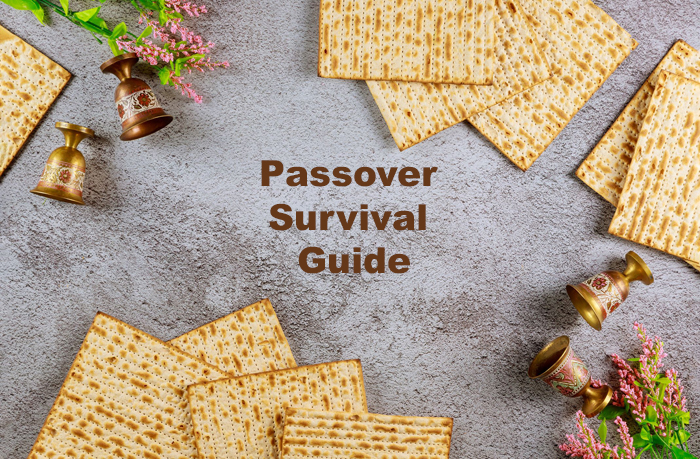One of the most compelling and important chapters in Torah is Exodus, in which G-d gives Moses and the Jewish people the Ten Commandments. These basic laws brought justice, mercy, charity and rules to guide a thriving society. Exodus has been the subject of glamorous and dramatic epic movies. It is a fantastic tale that some believe to be just that – a tale not based on fact. The true story might not be as dramatic as the parting of the waters, but it is just as powerful.
Exodus begins with Abraham’s great grandson, Joseph. He is the son of Jacob (Israel) and his wife Rachel, who lived in Canaan. Joseph’s older half-brothers of different mothers were jealous of him. They felt that he was favored by Joseph out of his deep love for Rachel. The multicolored coat symbolizes the perceived favoritism.
Genesis 37:18 recounts how this jealousy caused them to rid themselves of their younger brother by selling him into servitude. The caravan takes Joseph to Egypt, where he becomes imprisoned as a slave. Joseph is brought before Pharaoh to decipher the king’s troubling dreams. He foretells a famine (Genesis 41:14-37) and advises Pharaoh to prepare for seven bare years. Pharaoh heeds his warning. As a reward, Joseph is appointed vizier, the highest official in ancient Egypt under Pharaoh.
By heeding Joseph’s advice, the Egyptians had enough grain stored to feed their own people, as well as Israelites seeking refuge from famine. The story of the Jewish people in Egypt and their ultimate escape is also found in Egypt’s own recorded history. We weren’t known as “Jews” then; the term would not be used until many centuries later. During our sojourn in Egypt, we called ourselves Israelites or Hebrews.
The Old Kingdom (circa 2649 to 2150 B.C.) ruled by native Egyptian pharaohs ended when adverse weather left fields parched and barren. Pharaoh was seen as responsible, because it was believed that he controlled the waters of the Nile. “The kings would have been discredited by the famine, because pharaonic power wrested in part on the belief that the king controlled the Nile flood. In the absence of central authority, the hereditary landowners took control and assumed responsibility for maintaining order in their own areas. The manors of their estates turned into miniature courts, and Egypt splintered into a number of feudal states.” (Helen Chapin Metz, ed. Washington, DC: Federal Research Division of the Library of Congress, 1990 CE).
Canaanite people called Hyksos arrived in Egypt circa 1975 B.C. The Middle Kingdom (circa 2030 to 1640 B.C.) coincides with the arrival of these Semitic people. Conditions were ripe for the Hyksos to step into a leadership role from 1805 to 1535 B.C. in Lower (southern) Egypt. Under their rule, Egypt prospered. This confirms the Bible’s story of Joseph, a Canaanite, who advised Pharaoh to store food to avoid future calamities. Upper (southern) Egypt remained in native Egyptian control. Egypt’s list of pharaohs includes these Semitic rulers, whose names reflect Old Hebrew. The painted walls of the Tomb of Khnumhotep II show the Hyksos bringing their families, animals and weapons to Egypt. The Hyksos are credited with inventing the composite bow, battle axes, bronze and horse-drawn chariots.
Historical scholars Manetho and Flavius Josephus wrote about the Hyksos. Both had different meanings for the word Hyksos. Manetho, an Egyptian priest, thought it meant “rulers of foreign lands.” Flavius Josephus translated it as “king-shepherds” and thought the Hyksos and Hebrews were one and the same. Regardless, both were shepherds who led their flocks from Canaan to Egypt and became foreign rulers. When Joseph was vizier, he knew Pharaoh, a fellow Semite. The foreigners remained longer than they were welcome. Exodus 1:8 states that “Now there arose up a new king over Egypt, which knew not Joseph” and enslaved the Hebrew people. Just who was this pharaoh?
The Semites thrived and multiplied. Native Egyptians resented them and sought to regain their throne. They were suspicious of the foreigners’ loyalty and feared they would side against them if they warred with Canaan. (It might be noted that our Founding Fathers had the same concern when they limited the presidency to U.S.-born candidates.) Kamose led his native compatriots in battle and regained control of the northern realm. He erected two steles at Karnak, glorifying the end of 108 years of Hyksos rule. Ahmose became Pharaoh circa 1539 B.C. and was probably the pharaoh cited in the Bible as not knowing Joseph.
The surviving Semites were enslaved. Egyptians feared that they might rise up again. To keep their numbers controlled, Torah says that midwives were instructed to kill male Hebrew babies at birth. Moses was spared this fate by being set adrift on the Nile in a basket. Rameses II (circa 1279 B.C. to 1213 B.C.) constructed many buildings, including the Abu Simbel temples. It is believed that Israelite slaves toiled to construct these buildings and pyramids. This is chronicled in the Torah and is recounted each year when Jews celebrate Passover.
Israel is mentioned on only one Egyptian monument, the Merneptah Stele. Stolen from the funerary chapel of Amenhotep III, King Merneptah (1213 to 1203 B.C.) repurposed the monument by writing on its back side. The inscription cites victories over Canaanite cities. Only one reference is to Israel: “Israel is laid waste and his seed is not.” Could this mean that all Hebrews had been banished from Egyptian soil? Certainly not all Israelites perished in the fighting. Historians estimate that the Hebrew enslavement ended circa 1200 B.C. Moses led his people to freedom after bringing plagues and death to the firstborn sons of Egypt.
Manetho wrote in his historical book that the Hyksos fled Egyptian chariots through the Sea of Reeds (also referred to as the Reed Sea or Red Sea). According to Torah and our Passover Haggadah, the Hebrews also fled Pharaoh’s chariots. They fled into that same sea, displacing water into walls of waves, in their rush to freedom. Whether the Hyksos and Hebrews were the same people is unknown. However, recorded Hyksos, Egyptian and Israelite history match.
Noreen A. Cohen has traveled extensively and is interested in different cultures and religious beliefs. She enjoys writing about belief in relation to historical fact.






